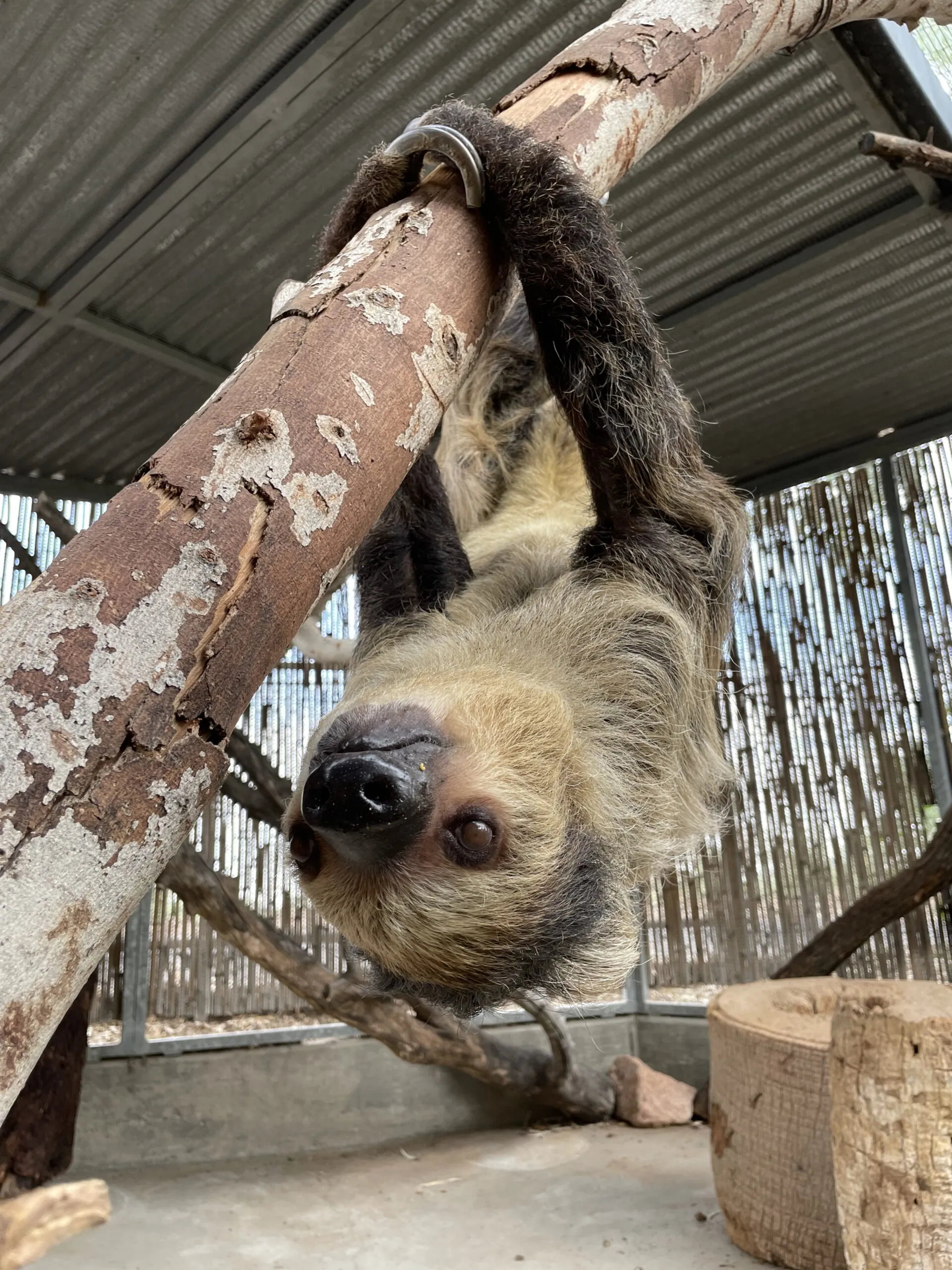Home Explore Animals & Wildlife Linne’s Two-toed Sloth
Linne's Two-toed Sloth
Choloepus didactylus
I’m Laid-back
Sloths have a reputation for being the slowest moving mammals on earth, but there are good reasons for their laid-back approach to life. By moving slowly, they conserve energy. This is important, as their leafy, low-calorie diet provides little fuel. They are often motionless even when awake and sleep about 15-18 hours a day, waking at night to feed. They digest their meals equally as slow, and leave the treetops only every 4-8 days to eliminate waste under their home trees. Their limited ability to maintain a core temperature means they must sunbathe often to keep warm.
I Live in an Upside-down World
Sloths live high up in the trees of tropical and subtropical rainforests, traveling from tree to tree along the connected canopy. They spend most of their time hanging upside down from (or curled up in) tree branches, looking to predators like a termite’s nest or a tree knot. They sleep, eat, mate and even give birth upside down! Their internal organs, such as the heart, spleen and liver, are arranged to accommodate upside-down living. Unlike other mammals, a sloth’s hair parts in the middle of its belly and grows towards its back, which allows water to run off its body during rainstorms. However, the sloth is so sedentary, its grooved, damp hair collects algae. The sloth eats the algae for extra nutrition, and it gives the sloth a greenish tint that further camouflages it from predators.
I Don’t Wander Far From Home
The Linne’s two-toed sloth’s slowness means its home range is very small. In the treetops, the sloth moves with a deliberate hand-over-hand motion. But it can’t support its weight on the ground, so it must pull itself along with its strong front legs. It rarely spends successive days in the same tree, but does not travel more than 40 yards per night. Surprisingly, Linne’s two-toed sloth is an excellent swimmer and often waits for the forest to flood to swim to its next tree home.

Diet: leaves, twigs, fruits, insects, eggs, rodents, birds
Zoo Diet: formulated feed, browse, starch, veggies, fruits, greens
Habitat: tropical forests
Weight: 9 – 20 lbs


Plan your visit today!
The Phoenix Zoo is one of the largest non-profit zoos in the U.S., caring for over 3,000 animals, with nearly 400 species represented, including many threatened/endangered species.

Plan your visit today!
The Phoenix Zoo is one of the largest non-profit zoos in the U.S., caring for over 3,000 animals, with nearly 400 species represented, including many threatened/endangered species.







